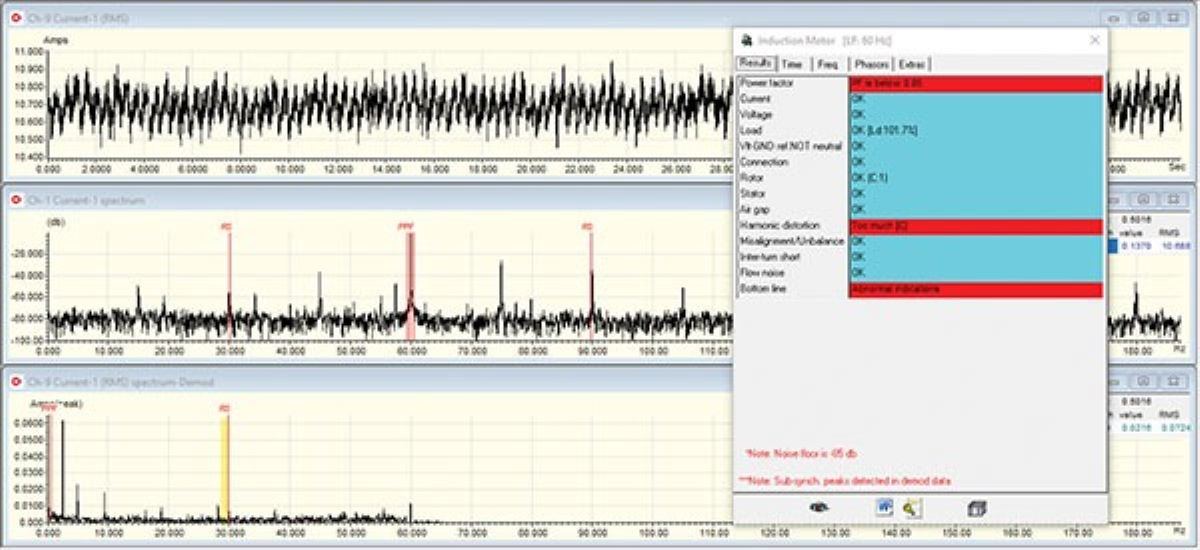Field Test Motor Efficiency

One of the considerations that resulted from the Energy Policy Act of 1992 (EPACT 92) was the desire by many organizations to perform motor efficiency testing in the field. The official method for efficiency testing that met Federal law was the IEEE Std. 112 Method B, which measures input and output power and segregates motor losses (IEEE Standard Test Procedure for Polyphase Induction Motors and Generators}. This is challenging when trying to determine if issues exist in the field as required and specific electrical and load (dynamometer) conditions need to be performed in a controlled shop or laboratory environment.
Oak Ridge National Laboratory (ORNL), which held the original patents on Electrical Signature Analysis (ESA) starting in the late 1980s, identified a method referred to as “Combination Air Gap Torque Method and Current Analysis to Determine Motor Condition (J. D. Kueck, “Development of a method for estimating motor efficiency and analyzing motor condition,” Conference Record of 1998 Annual Pulp and Paper Industry Technical Conference).” Research determined that a combined air gap torque method and the use of ESA (voltage and current) could accomplish an accuracy in efficiency calculations of 1% or better. The ORNL process varies from another IEEE 112 method E, which looks at input and output torque, in that it also compensates for varied power conditions, including harmonic content, which are outside of the scope of IEEE 112.
The method uses the product of airgap torque and rotor speed to calculate input versus shaft power in watts or kilowatts. The advanced methodology developed by ORNL uses voltage and current waveforms to calculate the airgap torque while also identifying defective components within the machine being tested. The input power is calculated using the instantaneous phase voltages and currents while the airgap torque is calculated in Newton-meters, which also allows the technology to determine the losses associated with each defect.
Once these values are determined, the efficiency is calculated as shown in the following equation:
η= [(air gap torque)*2π*rpm/60-(friction windage loss)-(stray loss)]
((input power))
Other field methods that were determined to be less accurate, and require loads exceeding 50%, but provide an outline include:
Slip method: Uses the measured slip against the rated slip times the rated output power divided by the input power. Accuracy can be increased by compensating for variations from the nameplate and supply voltage.
Current method: Uses current measurements at no load (uncoupled) and at normal loads and compares them to the nameplate current. This is multiplied against the rated output power and divided by the input power.
Both methods are about 5% accurate so long as the load exceeds 50%. While the slip method varies linearly with load, current does not and is more inaccurate.
By Howard W. Penrose, Ph.D., CMRP, MotorDoc
Howard W. Penrose, PhD, CMRP, is president of MotorDoc LLC, Lombard, IL (motordoc.com). He chairs the wind-power standards and government relations participation for American Clean Power (ACP/AWEA), holds various IEEE standards positions, and is a past chair of SMRP. Reach him at [email protected].
The post "Field Test Motor Efficiency" appeared first on Efficient Plant

